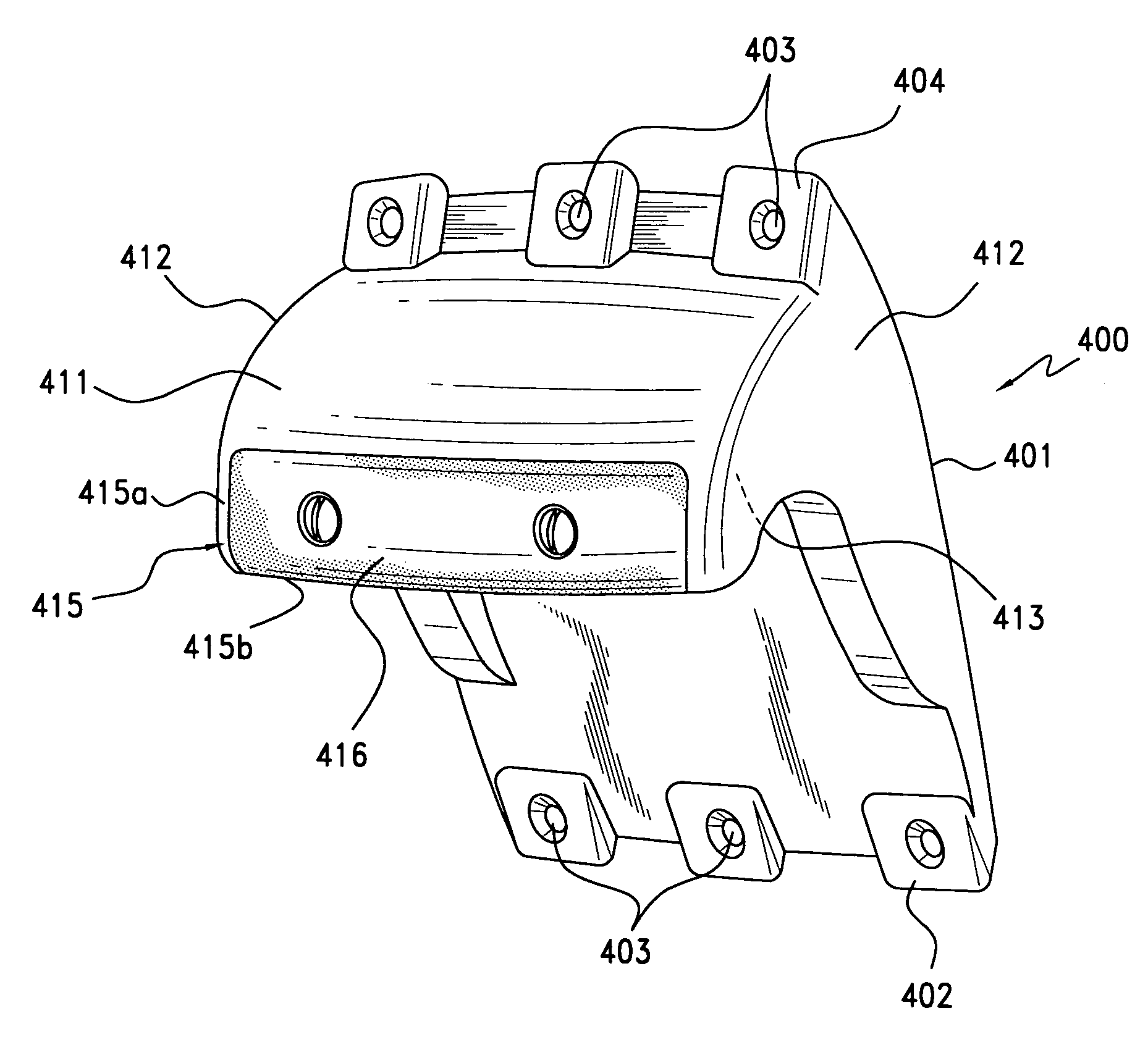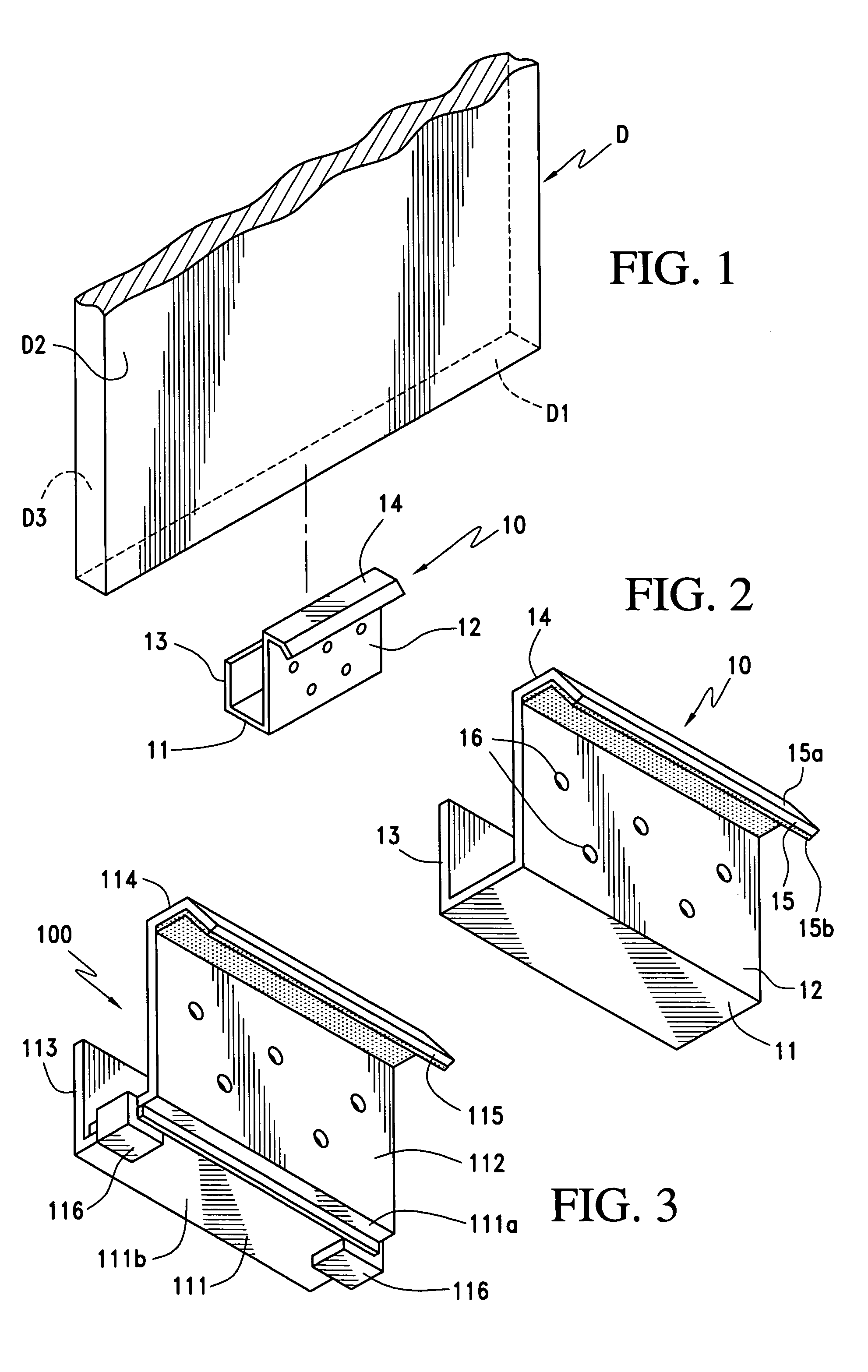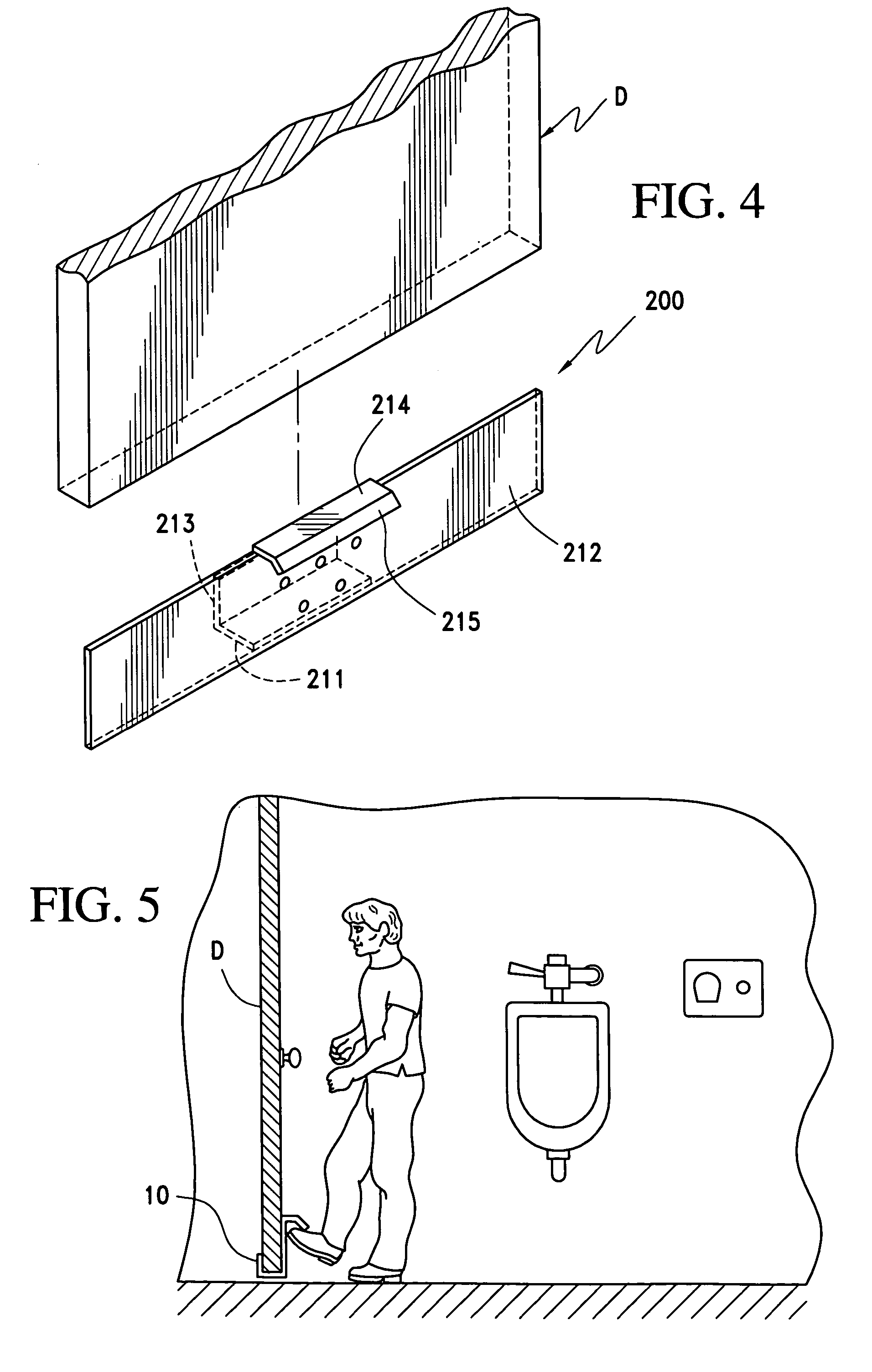Sanitary door opener
a door opener and sanitary technology, applied in the field of sanitary door openers, can solve the problems of contaminating the door hook, affecting the service life of the door opener, and being prone to unsanitary conditions, and achieve the effects of convenient installation, low manufacturing cost, and sufficient strength
- Summary
- Abstract
- Description
- Claims
- Application Information
AI Technical Summary
Benefits of technology
Problems solved by technology
Method used
Image
Examples
Embodiment Construction
[0024]The present invention relates to a sanitary door opener adapted to be installed on the bottom of a door in such a manner that a person can use his / her foot to pull the door open. Referring to FIGS. 1 and 2, a door D is shown having a bottom edge D1, a rear panel D2 and a front panel D3. Also shown is the sanitary door opener 10 of the present invention, comprising a bottom face 11, a rear face 12, a front face 13 and a top face 14 extending outwardly and at about a 90° angle (i.e. about perpendicularly) from rear face 12. The depth of bottom face 11 is configured to complement the bottom edge D1 of door D. Preferably, the depth of bottom face 11 is about 1¾″ which is the standard depth of a conventional door. However, it is to be understood that the depth of the bottom face 11 can vary depending on the depth of the door. In this manner, the sanitary door opener 10 can be slid under an opened door such that rear face 12 contacts the door's rear panel D2, front face 13 contacts ...
PUM
 Login to View More
Login to View More Abstract
Description
Claims
Application Information
 Login to View More
Login to View More - R&D
- Intellectual Property
- Life Sciences
- Materials
- Tech Scout
- Unparalleled Data Quality
- Higher Quality Content
- 60% Fewer Hallucinations
Browse by: Latest US Patents, China's latest patents, Technical Efficacy Thesaurus, Application Domain, Technology Topic, Popular Technical Reports.
© 2025 PatSnap. All rights reserved.Legal|Privacy policy|Modern Slavery Act Transparency Statement|Sitemap|About US| Contact US: help@patsnap.com



